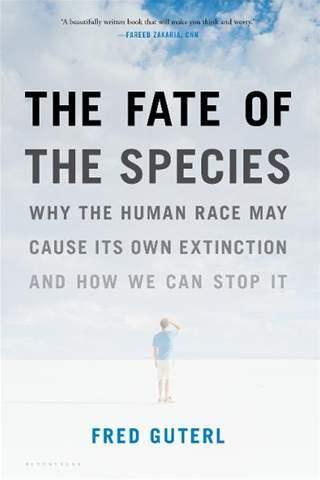
Why the Human Race May Cause Its Own Extinction and How We Can Stop It, By Fred Guterl
(Bloomsbury)
Consider if you dare the case of bioengineers who’ve implanted a microchip into the brains of certain research beetles, a chip which connects to the beetle’s nervous system and sends tiny pulses of energy that make the beetle “behave,” to turn left or right, zig and zag, do loop-de-loops and otherwise respond to various commands. What’s the point? Imagine a million of these caustic fellows descending on Russia’s wheat fields with a command to eat, or a few even more stealthy and learned beetles loosed on al-Qaida, with digital cameras for eyes.
Fred Guterl, executive editor of Newsweek with 10 years’ experience covering science, technology and international affairs, has written a lively popular account of the various modalities in which humans continue to invade their own space with hitherto unheard-of inventions. “The Fate of the Species” is a quick and modestly quirky tour of humanity’s dance of death with climate change, bio-engineering, overpopulation, ecosystem disruption (think corporate manipulation of seed), nanotechnology and synthetic biology.
In Guterl’s view, all of the above (and more) create a clear and present danger that humans are playing with fire and may get burned.
Of course, we already have been burned, though it seems hard to fathom that at current rates the human species may go extinct entirely in the near term. Most mammalian species in the geologic history have hung on for a couple of million years, while modern humans have been around for barely 200,000. Nevertheless, as Guterl explains, earth history reveals five mass extinction events in its past, including the devastating Permian extinction in which about 95 percent of all species disappeared, leaving a clear field for the ensuing Age of Reptiles in the Mesozoic.
Many, if not most, ecologists believe we are in the midst of a sixth mass extinction caused by human activity.
Guterl explores current dangers like super-bugs, microbes which are rapidly becoming immune to antibiotics, or those genetically engineered species which might be unleashed by terrorists on civilian populations. These deadly plagues also threaten our fragile “mass monoculture” agriculture, dependent as it is on huge amounts of water, chemical fertilizer, and genetically engineered seed. What if the weather gets hotter and all this fence-row-to-fence-row corn, wheat and soy dies off? Whose famine will come next and on what continent?
“The Fate of the Species” is a quick, fascinating read, built specifically for discriminating laymen who want to learn about current state-of-the-art adventures in biology, climatology, and biochemistry and how these adventures threaten our existence.
However, in the title Guterl promises to tell us “how we can stop it.” In fact, there is hardly a word about politics in the book, nor a mention of religion, ethnicity or migration patterns. In short, Guterl’s promise goes begging.
And while it is easy to see how millions, and even billions, of humans could die as a result of these adventures, it is hard to see how even these prodigious die-offs could cause the human species disappear entirely, though it is clear that increasingly hard times are ahead.
And that isn’t to say the world wouldn’t be better off without us.
(MCT)
-
Articles by Korea Herald






![[Weekender] How DDP emerged as an icon of Seoul](http://res.heraldm.com/phpwas/restmb_idxmake.php?idx=644&simg=/content/image/2024/04/25/20240425050915_0.jpg&u=)



![[Music in drama] An ode to childhood trauma](http://res.heraldm.com/phpwas/restmb_idxmake.php?idx=644&simg=/content/image/2024/04/25/20240425050929_0.jpg&u=)








![[Herald Interview] Mistakes turn into blessings in street performance, director says](http://res.heraldm.com/phpwas/restmb_idxmake.php?idx=652&simg=/content/image/2024/04/28/20240428050150_0.jpg&u=20240428174656)
